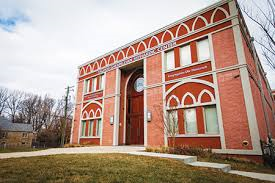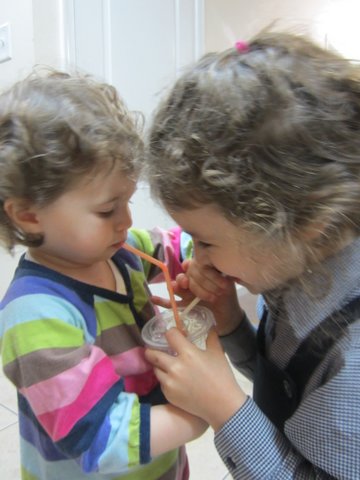Purim Sixty Years Ago
by Raphael Blumberg
Sixty years ago, we lived on Palmer Avenue in Lower Park Heights – a different planet, a different Purim. There was no drinking on Purim as celebrated on Palmer Avenue. There was no Purim seudah that I can recall. There was a Megillah reading at Rabbi Sadovsky’s shul, with groggers. Each year, I went to Beth Tefiloh Day School in an ornate costume put together by my father. And there were my mother’s hamantaschen, the best in Baltimore! (They had to be.). My mother made two types: poppy seed (which we called “mun”) and date. My father was in charge of preparing the poppy seeds. This involved cooking them and then letting them hang in a bag in the laundry room, dripping water on the floor. I recall nothing more about that process. It hasn’t been passed on to me. I don’t know if people still do that today, although something tells me they don’t, just as my mother’s salting and kashering chickens right in our own home rather than receiving them kashered from the butcher might be a thing of the past. That said, I have one special memory of Purim I would like to share.
My father, Professor Arnold Blumberg, a”h, was preoccupied with Jewish survival or, more precisely, destruction and rebirth. He had witnessed the Holocaust and the founding of the State of Israel soon after. In 1943, he lost an eye as a 19-year-old boot-camp soldier in a war-games training accident at Fort Bragg, North Carolina and, paradoxically, thus survived the war. All his basic-training comrades were wiped out a few months later in the battle at Normandy. His life’s experiences – the annihilation and rebirth of the 1940s, the odd twist of fate that had kept him alive – all strengthened his sense that the world had a divine order to it, and restored him to the Orthodoxy of his grandparents. He even named my brother “Michael Seth,” using the Hebrew name Sheis, Adam and Eve’s third son, born to start a new world after Cain sowed destruction by killing Abel. In my entire life I have never met another Sheis, but it was the best way my father had of expressing his appreciation of destruction and rebirth.
Thus, in 1963, when I was eight years old, our last year on Lower Park Heights before we moved up to Glen Avenue, my father sent me out with my mother’s hamentashen to go door-to-door and give out shalachmanos to all the neighbors, Jew and non-Jew. I was instructed to tell each neighbor, in two sentences, the story of Purim: how the Jewish people were almost annihilated by Haman and how we celebrate our having been spared. Today, 57 years later, it is hard for me to believe that he asked me to do that, and it is hard for me to believe that I actually agreed, but this really happened.
That was my Purim back then. Was there a conventional Purim seudah? If there was, I don’t recall it. My father had to make do with the bag lunch he brought with him to work. Our Purim was primitive, without any social milieu. Call it a “Swiss Family Robinson” Purim. There was also no men’s table, no under-the-table drunkenness, no teenage “Purim cigarettes,” no fretting over whether what you gave the neighbor was as good as what you got. There was no “dvar Torah” – I didn’t know the meaning of the words – and certainly no clever dvar Torah that I spend months looking for so I can entertain my friends after drinking my 750 cubic centimeters of sweet wine.
But there was content all the same, a clear, simple message that you could share, and I definitely benefited from it.
Raphael Blumberg lives in Kiryat Arba.


















